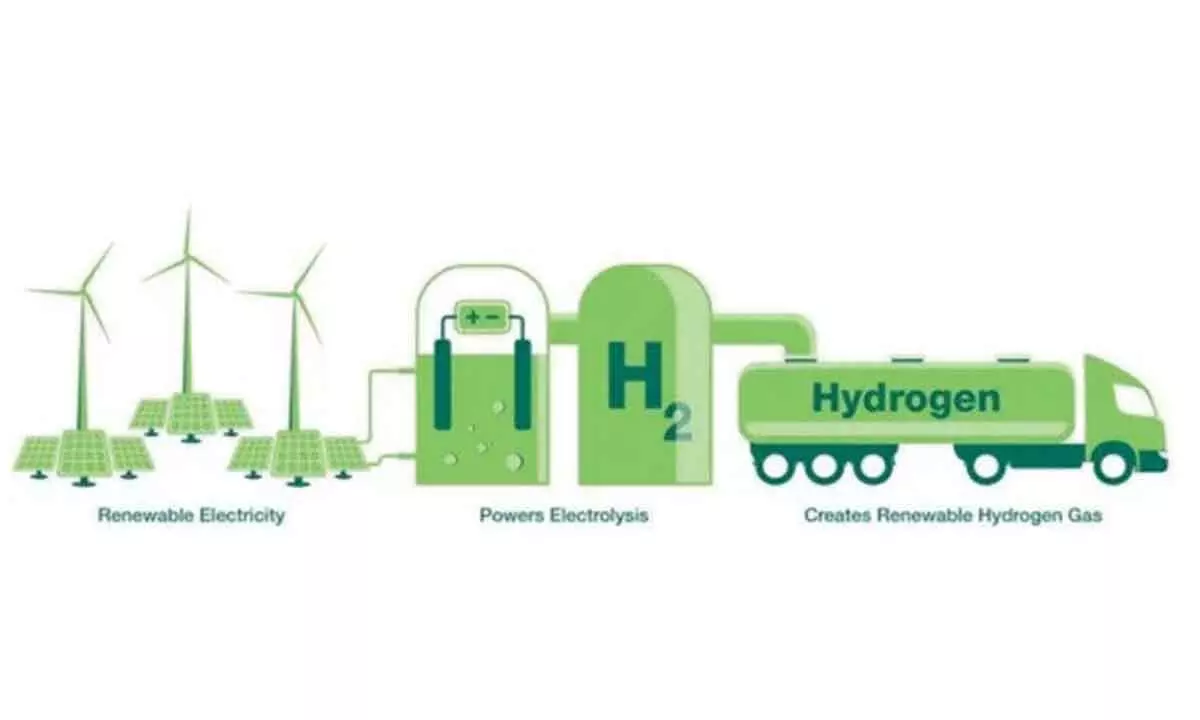A hydrogen gold rush is the order of the day!
Governments and industries must create incentives and regulations that encourage adoption of hydrogen technologies
image for illustrative purpose

Hydrogen can be extracted from fossil fuels and biomass, from water or from a mix of both. Natural gas is currently the primary source of hydrogen production, accounting for around three quarters of the annual global dedicated hydrogen production of around 70 million tonnes
Hydrogen is important for the future because it can be a versatile, clean and an abundant energy carrier. It can store surplus renewable energy and release it whenever needed, easing a shift to more sustainable energy systems.
Clean hydrogen fuel may occur naturally in large underground reservoirs across the planet. Big companies, startups and the US government are all trying to tap into this carbon-free fuel. Believe it or not, drilling for a certain type of gas could open up a new world of clean energy.
Trillions of tons of lightweight, energy-dense hydrogen gas may be hidden deep underground. Those natural reservoirs, known as geologic hydrogen, could be a fruitful carbon-free fuel source.
To shift to hydrogen on a large scale, investments in production, storage and distribution infrastructure are needed. Developing cost-effective methods for producing green hydrogen from renewable sources is crucial. Additionally, governments and industries must collaborate to create incentives and regulations that encourage the adoption of hydrogen technologies.
Hydrogen is a high-energy, zero-emission fuel choice for vehicles. When used in fuel cells, it produces electricity to power an electric motor. It's suitable for larger vehicles where battery weight could be prohibitive. Hydrogen fuel is also appealing because it can be produced from various domestic resources, potentially reducing dependence on imported oil.
The primary environmental benefit of using hydrogen fuel cells in trucks is the significant reduction in harmful emissions. Fuel cells emit no pollutants—only water vapor and heat. This can contribute to improved air quality and a reduction in the transportation sector's impact on climate change.
Hydrogen can be extracted from fossil fuels and biomass, from water or from a mix of both. Natural gas is currently the primary source of hydrogen production, accounting for around three quarters of the annual global dedicated hydrogen production of around 70 million tonnes. This accounts for about six per cent of global natural gas use. Gas is followed by coal, due to its dominant role in China, and a small fraction is produced from the use of oil and electricity.
The production cost of hydrogen from natural gas is influenced by a range of technical and economic factors, with gas prices and capital expenditures being the foremost.
Fuel cost is the largest cost component, accounting for between 45% and 75% of production costs. Low gas prices in the Middle East, Russia and North America give rise to some of the lowest hydrogen production costs. Gas importers like Japan, Korea, China and India have to contend with higher gas import prices, and that makes for higher hydrogen production costs.
At present, hydrogen is still too expensive for the mass market. Nevertheless, innovative pilot projects are being carried out in various areas to test its operational range.
For example, hydrogen-powered trucks are already proving their worth in the daily transport of goods across hundreds of kilometers. In another example, a hospital is testing how energy-efficient fuel cell systems can reliably power critical infrastructures.
Further research and innovations are needed to establish hydrogen as a comprehensive solution over the long term. The objective is to increase the efficiency of hydrogen production and reduce costs. Only green hydrogen produced with electricity from renewable sources makes an effective contribution to climate protection.
‘Green hydrogen’ refers to a 100% clean solution. It is produced by using renewable energy sources like solar and wind. Today, less than one percent of total annual hydrogen production is green. However, this is expected to grow as the infrastructure needed to create it is being expanded and production costs continue to fall.

